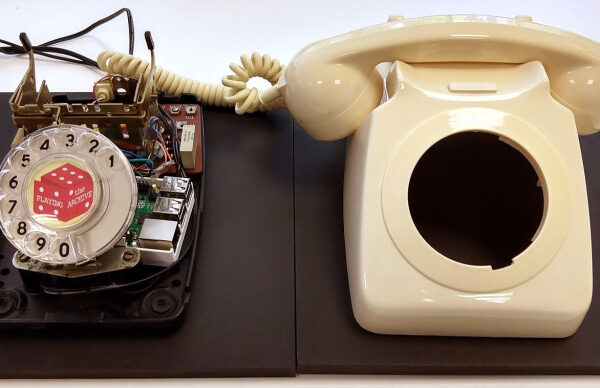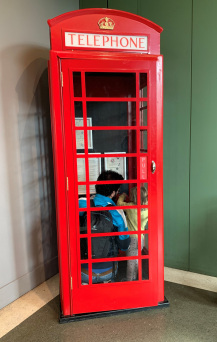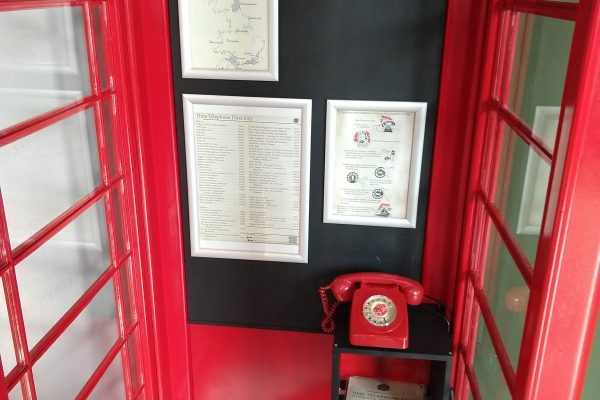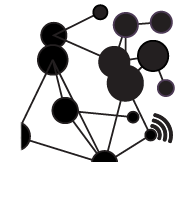The Time Telephone installation explores the usage of everyday interfaces, enhanced with digital computing technologies, to communicate and preserve the fragile and ephemeral cultural memories of play.
Partners
UCL, University of Sheffield, Victoria & Albert Museum of Childhood, Site Gallery Sheffield, Bodleian Libraries University of Oxford
CASA Contact
Andrew Hudson-Smith, Valerio Signorelli
Quick Facts
One of the aims of the Playing the Archive project was to activate the extensive Opie Archive in playful interactive installations. This has led to the development of the Time Telephone, an installation that explores new forms of tangible and multi-sensory interfaces to communicate and preserve the fragile and ephemeral cultural memories of play. Users are invited to step into the telephone box and use an original rotary phone to call children from around the country and hear about their play adventures. The Time Telephone explores the potentiality of the kiosk to trigger contrasting experiences among visitors: older generations will find themselves plunged into a familiar activity of the past (the use of the rotary phone) that will likely trigger childhood memories; younger generations will discover games of the past by using (or rather playing with) an unknown interface, nowadays replaced by smartphones.




